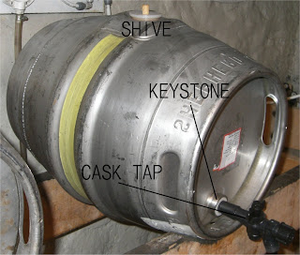Guide for setting up real ale
Mar 01, 2013
A basic guide for setting up real ale in pub cellars using standard cask taps, this guide is no good for upright syphon rods.
- Racking-When possible casks must be stillaged level upon delivery and secured to prevent any movement. This will allow the sediment to settle to the bottom of the cask. Do not settle the casks tilting forwards, this can cause the sediment to settle close to the neck of the cask tap that will come out in the product during dispense.
- Venting- The cask should be vented on the day that the beer is delivered, ideally after a few hours allowing time for beer to settle and cool. To vent - make sure that shive and venting hole are both clean, next knock a hole through the shive into the cask with either a hard peg or a venting tool. Once the cask has vented replace loosly with a soft wooden peg. Keep the soft peg in place until the fermentation/bubbling has stopped, then replace with a hard peg until you are ready for sale.

If there are any signs that pressure is building up behind the hard peg a little more time with a soft peg will be required!
Make sure that wooden pegs are only used once and destroyed to prevent bacteria getting into the beer.
- Tapping the cask- Make sure that the keystone is clean and the cask tap is sterile. Remove the hard peg and with the cask tap partially open knock through the keystone with a wooden mallet. Allow time for the cask to settle again then sample to beer from the cask tap into a glass to inspect the clarity/quality.
If the clarity, taste and smell are all ok the cask is now ready for you to connect and serve.


